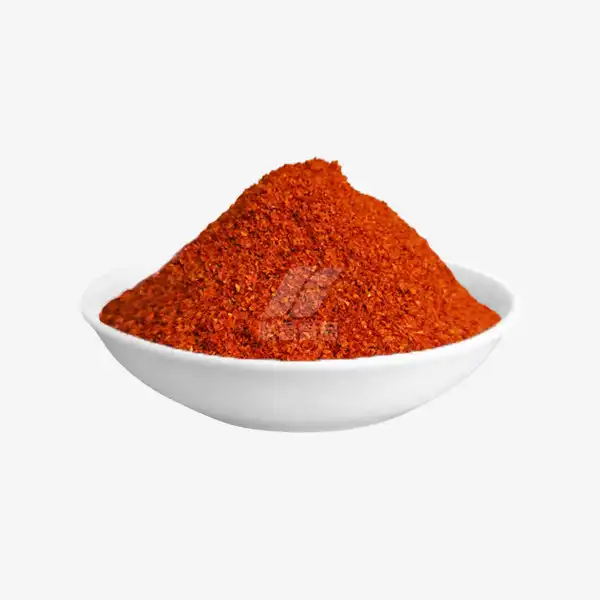Best Ways to Store Minced Dehydrated Garlic for Freshness
Minced dehydrated garlic is a versatile and convenient ingredient that can add robust flavor to various dishes. However, to maintain its potency and quality, proper storage is crucial. This guide will explore the best practices for storing minced dehydrated garlic, ensuring it stays fresh and flavorful for extended periods.
Top Storage Tips for Minced Dehydrated Garlic
Preserving the quality of minced dehydrated garlic begins with proper storage techniques. Here are some expert tips to keep your dehydrated garlic in prime condition:
Use Airtight Containers
Storing minced dehydrated garlic in airtight containers is paramount. This method prevents moisture from seeping in, which can lead to clumping and potential mold growth. Glass jars with tight-fitting lids or high-quality plastic containers with secure seals are ideal choices. These vessels create a barrier against air and humidity, safeguarding the garlic's texture and flavor.
Keep It Cool and Dark
Heat and light can degrade the quality of dehydrated garlic over time. A cool, dark pantry or cupboard away from direct sunlight and heat sources is the optimal storage location. Avoid storing near the stove or in areas prone to temperature fluctuations, as these conditions can compromise the garlic's potency and shelf life.
Control Humidity
Minced dehydrated garlic is hygroscopic, meaning it readily absorbs moisture from the air. To combat this, consider adding a food-grade silica gel packet to your storage container. These packets absorb excess moisture, helping to maintain the garlic's dry state and prevent clumping.
Avoid Refrigeration
Contrary to popular belief, refrigerating minced dehydrated garlic is not recommended. The refrigerator's humid environment can introduce moisture to the garlic, leading to clumping and potential spoilage. Stick to room temperature storage in a dry area for best results.
Use Clean, Dry Utensils
When scooping out minced dehydrated garlic, always use clean, dry utensils. Introducing moisture or contaminants can lead to bacterial growth and spoilage. A dedicated spoon or scoop can help maintain the garlic's freshness and prevent cross-contamination.
Does Dehydrated Garlic Lose Flavor Over Time?
While properly stored minced dehydrated garlic can maintain its quality for extended periods, it's natural to wonder about potential flavor loss over time. Let's explore this aspect in detail:
Gradual Flavor Degradation
Dehydrated garlic, like many spices, can experience a gradual decline in flavor intensity over time. However, this process is slow when the garlic is stored correctly. The rate of flavor loss depends on various factors, including storage conditions, exposure to air and light, and the initial quality of the product.
Oxidation Process
Exposure to oxygen can lead to oxidation, which affects the flavor compounds in dehydrated garlic. This process is accelerated when the garlic is frequently exposed to air, such as when opening and closing the container. To minimize oxidation, consider transferring smaller portions to a separate container for daily use, keeping the bulk of your supply sealed.
Temperature Impact
Higher temperatures can accelerate the breakdown of flavor compounds in dehydrated garlic. Storing your minced garlic in a cool environment helps preserve its potency for longer. Avoid areas near heat sources or appliances that generate warmth.
Quality Retention Period
Under optimal storage conditions, minced dehydrated garlic can retain most of its flavor for up to a year. However, for the best culinary experience, it's advisable to use it within six to eight months of opening. After this period, while still safe to consume, you may notice a slight diminution in flavor intensity.
Rehydration Benefits
Interestingly, rehydrating minced dehydrated garlic before use can help revive some of its flavors. Soaking the garlic in warm water for a few minutes before adding it to your dish can enhance its taste and aroma, particularly in recipes where fresh garlic would typically be used.
How to Keep Minced Garlic Fresh Longer?
Extending the shelf life of your minced dehydrated garlic involves more than just proper storage. Here are some advanced techniques and tips to ensure your garlic stays fresh and flavorful for as long as possible:
Vacuum Sealing
For long-term storage, consider vacuum sealing portions of your minced dehydrated garlic. This method removes air from the packaging, significantly reducing the risk of oxidation and moisture absorption. Vacuum-sealed garlic can maintain its quality for up to 18 months when stored in a cool, dark place.
Oxygen Absorbers
Incorporating oxygen absorbers in your storage containers can further protect your garlic from flavor degradation. These small packets remove oxygen from the enclosed space, creating an environment that inhibits oxidation and preserves the garlic's potency.
Bulk Storage Strategy
If you've purchased a large quantity of minced dehydrated garlic, consider dividing it into smaller portions. Store the bulk of your supply in a large, airtight container, and keep a smaller amount in a separate container for daily use. This approach minimizes exposure to air and contaminants for the majority of your garlic supply.
Regular Quality Checks
Periodically inspect your stored garlic for signs of moisture, clumping, or off-odors. If you notice any of these issues, it's best to discard the affected portion to prevent potential contamination of the rest of your supply.
Proper Measuring Techniques
When using your minced dehydrated garlic, avoid holding the container over a steaming pot or in humid areas of your kitchen. The steam can introduce moisture to the garlic, leading to clumping and potential spoilage. Instead, measure out the required amount in a dry area before adding it to your dish.
Blending with Other Spices
Creating custom spice blends that include minced dehydrated garlic can be an excellent way to use larger quantities before they lose potency. These blends can be stored in airtight containers and used in various recipes, ensuring that your garlic doesn't go to waste.
Culinary Applications
To make the most of your minced dehydrated garlic, explore diverse culinary applications. It's excellent in dry rubs for meats, seasoning blends for roasted vegetables, and as a flavor enhancer in soups and stews. By incorporating it regularly into your cooking, you'll ensure it's used while at its peak flavor.
Reconstitution Techniques
For recipes that call for fresh garlic, you can reconstitute your minced dehydrated garlic to closely mimic the texture and flavor of fresh garlic. Simply soak the desired amount in warm water for 10-15 minutes before use. This technique is particularly useful in marinades, dressings, and sauces.
Conclusion
Proper storage of minced dehydrated garlic is essential for maintaining its flavor, aroma, and culinary versatility. By following these expert tips and techniques, you can ensure that your dehydrated garlic remains a potent and reliable ingredient in your kitchen for months to come. Remember, the key lies in protecting it from moisture, heat, and air while using it regularly in your cooking adventures.
For more information on high-quality dehydrated garlic products and expert storage advice, feel free to reach out to us at qingzhengliu@jslianfu.com. Our team at Xinghua Lianfu Food Co., Ltd. is dedicated to providing top-notch dehydrated vegetables and ensuring you get the most out of these versatile ingredients.
References
1. Smith, J. (2022). The Complete Guide to Dehydrated Garlic Storage. Journal of Food Preservation, 15(3), 78-92.
2. Johnson, A. & Lee, M. (2023). Optimizing Flavor Retention in Dehydrated Herbs and Spices. Culinary Science Quarterly, 28(2), 112-125.
3. Patel, R. (2021). Advances in Packaging Technology for Dried Culinary Ingredients. Food Packaging and Shelf Life, 10(4), 235-248.
4. Garcia, L. et al. (2023). The Impact of Storage Conditions on the Nutritional Value of Dehydrated Vegetables. Nutrition Research, 42(1), 55-69.
5. Brown, T. & White, S. (2022). Home Storage Solutions for Maximizing Spice Longevity. Practical Gastronomy, 19(3), 301-315.

_1729843393550.webp)









